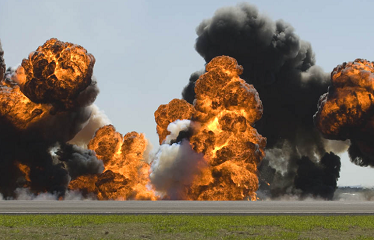LIU Feng,DAI Wei,WEI Guo,ZHU Zheng-de,BI Ru-jie,CHENG Yu-hang,PAN Chang-xin
. 2025, 48(4):
352-361.
To investigate the effects of different machine oil-diesel ratios on the explosive properties of site-mixed emulsified explosives, the viscosity and particle size distribution of emulsion matrices with varying oil-diesel ratios by using digital viscometry, laser particle size analysis, and optical microscopy were examined, the internal phase structure of explosive samples was observed. The density of matrices and explosive specimens were measured through PVC tube simulations of borehole charging configurations. Detonation velocity and brisance were respectively determined by using a detonation velocity tester and lead cylinder compression method. The results reveal that as the oil-diesel ratio in explosive formulations increased from 0:5.5 to 5.5:0, the matrix viscosity rose from 1.5×105mPa·s to 3.7×105mPa·s. Concurrently, the sensitized bubble concentration increased while the bubble size decreased, demonstrating improved uniformity. The dispersed phase droplet size distribution narrowed significantly with distribution width decreased from 86.19μm to 6.33μm, the mean particle size reduced from 13.85μm to 2.78μm, and dispersion index declined from 6.23 to 2.27, indicating enhanced homogeneity. At 0.3% sensitizer content, the explosive density increased progressively from 0.95g/cm3 to 1.10g/cm3. Corresponding improvements in detonation performance were observed: the detonation velocity increased by 24.08% from 3155m/s to 3915m/s showing consistency with theoretical predictions from the B-W method, and the brisance increased by 34.48% from 9.05mm to 12.17mm.With increasing the sensitizer concentrations(0.3%,0.5%,0.7%), the bubble density increased and the explosive density reduced. Distinct performance trends emerged based on oil-diesel ratios: formulations with ratios ≤3:2.5 exhibited initial enhancement followed by decline in detonation parameters, while those with ratios ≥4:1.5 demonstrated progressive reduction in explosive performance characteristics.




